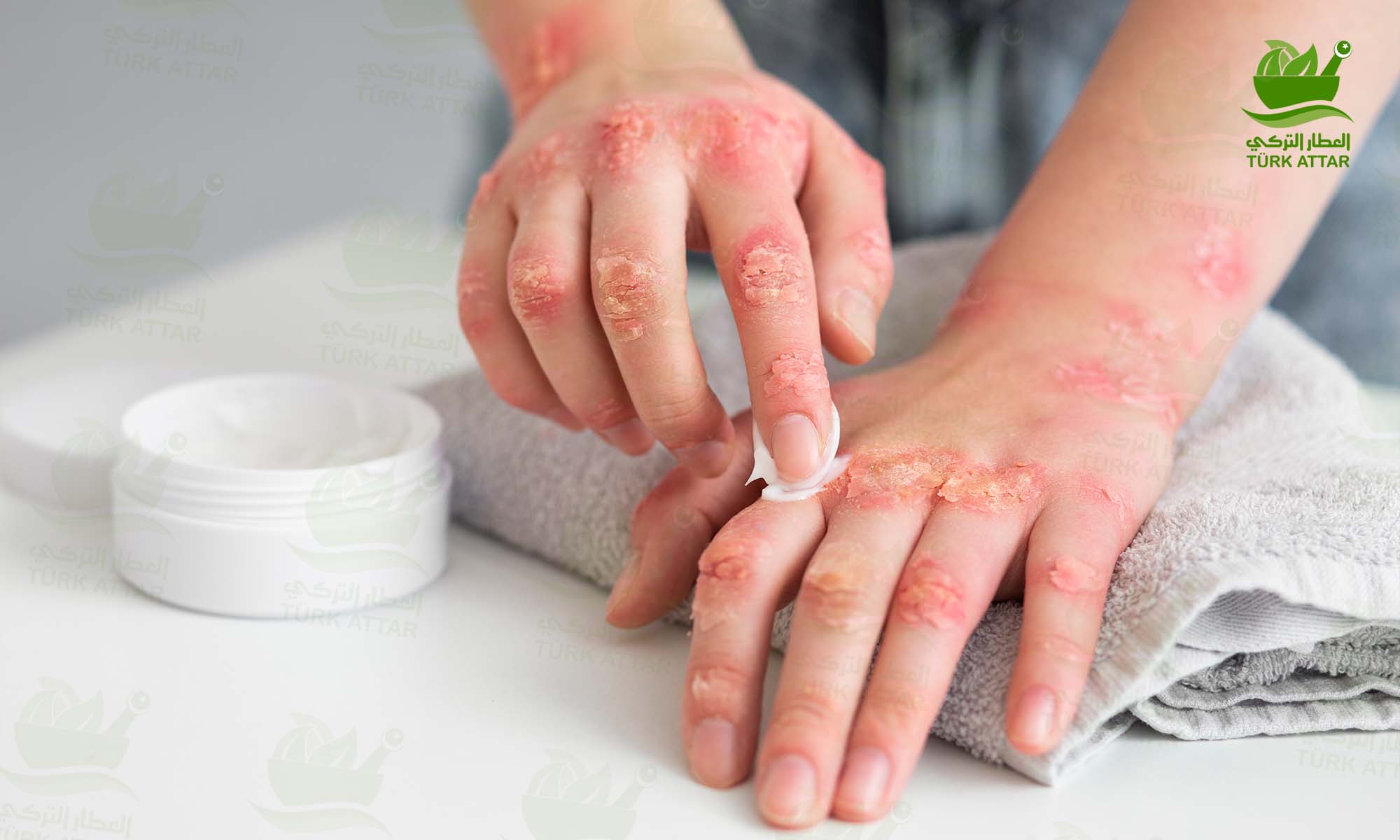
Psoriasis usually develops due to genetic transmission. Some factors may also cause psoriasis in people with a genetic predisposition. Psoriasis can also develop due to stress.
What is Psoriasis?
Psoriasis is a skin disorder that causes skin cells to multiply several times faster than normal. During psoriasis bumpy red spots covered with white scales begin to appear on the skin.
These scaly patches can grow anywhere on the skin, but they are most commonly seen on the scalp, elbows, knees, and back. Psoriasis is not contagious, meaning it cannot be passed from person to person. However, in some cases, it is seen in members of the same family. Psoriasis usually appears in early adulthood. In most cases, only a few areas of the skin are affected. But in more severe cases, psoriasis can cover a large part of the body. Red spots can heal over time and come back throughout the individual's life.
Who Gets Psoriasis?
Psoriasis usually develops due to genetic transmission. Some factors may also cause psoriasis in people with a genetic predisposition. Psoriasis can also develop due to stress.
Reasons
What Causes Psoriasis?
Although the exact cause of psoriasis is not yet known, experts believe that this disease occurs due to a combination of multiple factors.
A fault in the immune system causes unnecessary inflammation of the skin, which leads to the rapid proliferation of new skin cells.
Normally, skin cells are replaced every 10 to 30 days. In psoriasis, new cells grow every 3-4 days. The old cells that are so frequently replaced with new ones accumulate, revealing the silver scales that appear on the skin.
Psoriasis can be seen in individuals within the same family, but sometimes it can skip generations. For example, a grandfather and grandchild may be affected, but the child's mother may not be affected. Apart from this, psoriasis does not pass from person to person, it is not contagious.
Almost all types of psoriasis have some common triggers. These conditions that can trigger the resurgence of psoriasis include cuts, scrapes or surgical interventions on the skin, emotional stress, strep infections, lithium used for bipolar disorder, antimalarial drugs, blood pressure medications such as beta-blockers, hydroxychloroquine or antimalarial drugs, excessive alcohol use, especially in young men and smoking may occur.
The disease is more common especially in winter and cold days. Being in warm, sunny and humid environments can reduce the likelihood of the disease occurring.
In some individuals with psoriasis, even the smallest scratch or mosquito bite can cause a new trigger. This reaction is the emergence of lesions belonging to the post-traumatic disease, it is called the Koebner phenomenon. It occurs in one of four people with psoriasis.
Symptoms
What are the Symptoms and Types of Psoriasis?
The types of psoriasis are different from each other. Symptoms of psoriasis vary depending on the type an individual has. The most obvious symptom for plaque psoriasis, the most common type of psoriasis, is plaques covered with silvery scales in the form of red spots.
These plaques can be itchy and painful. The plaques can sometimes crack and bleed. In more severe cases, the plaques may grow and coalesce to cover very large areas of the skin. Discoloration and pitting of fingernails and toenails may occur. In addition, the nails may crumble or separate from the nail bed. Scaling or crusting may occur on the scalp.
Other types of psoriasis include pustular psoriasis, which usually occurs in adults, with small pustules, which are bubbles filled with non-inflammatory white or yellow fluid, on the palms of the hands and soles of the feet, causing the appearance of red and scaly skin.
Another type is droplet type or guttate psoriasis, which usually begins in childhood or young adulthood. This species often causes small, red spots on the trunk and limbs. Triggers of gouty psoriasis include respiratory infections, strep throat infection, tonsillitis, stress, skin injury, and use of antimalarial or beta-blocker medication.
Reverse localized or inverse psoriasis, which is seen as bright red lesions that appear in places where the skin is folded, such as the armpits, groins, behind the ears and under the breasts, is another type of psoriasis.
In erythrodermic psoriasis, it is seen that the skin has a burning redness and the scales can be shed in layers. Erythrodermic psoriasis can be triggered by severe sunburn, infection, the use of certain medications, and stopping some psoriasis treatments. It needs to be treated immediately, because it can lead to serious illness and serious problems.
In addition, individuals with psoriasis may experience a type of arthritis called psoriasis rheumatism or psoriatic arthritis. In this case, pain and swelling occur in the joints.
Psoriasis can be easily diagnosed during a physical examination during active periods. During the physical examination, the body is checked, especially the scalp, ears, elbows, knees, belly button and nails. In addition to the physical examination, a biopsy may be requested by the doctor. During the biopsy, a skin sample is taken to check for skin infection in the laboratory. Apart from this, there is no other test used to diagnose psoriasis.
Parapsoriasis, which can be confused with psoriasis due to its similarity, is the medical term for a group of rare skin problems that develop differently. A biopsy may be required by taking a skin sample to be sure that the individual has parapsoriasis. Parapsoriasis can cause serious problems such as cancer cases, so treatment is absolutely necessary.
